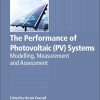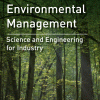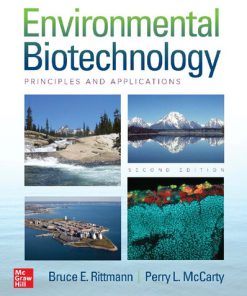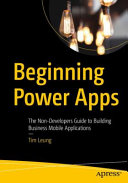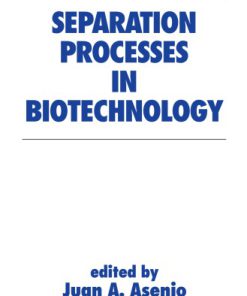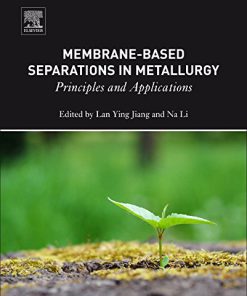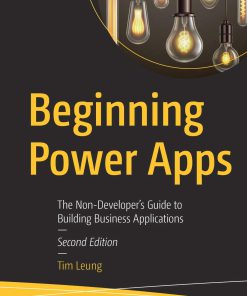Centrifugal Separations in Biotechnology 2nd Edition by Wallace Woon Fong Leung ISBN 008102634X 978-0081026342
$50.00 Original price was: $50.00.$25.00Current price is: $25.00.
Centrifugal Separations in Biotechnology 2nd Edition by Wallace Woon Fong Leung – Ebook PDF Instant Download/Delivery: 008102634X, 978-0081026342
Full download Centrifugal Separations in Biotechnology 2nd Edition after payment
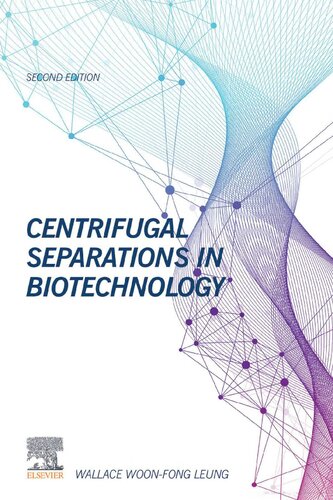
Product details:
ISBN 10: 008102634X
ISBN 13: 978-0081026342
Author: Wallace Woon Fong Leung
Centrifugal Separations in Biotechnology, Second Edition, is the only book on the market devoted to centrifugal separation in biotechnology. Key topics covered include a full introduction to centrifugation, sedimentation and separation; detailed coverage of centrifuge types, including batch and semi-batch centrifuges, disk-stack and tubular decanter centrifuges; methods for increasing solids concentration; laboratory and pilot testing of centrifuges; selection and sizing centrifuges; scale-up of equipment, performance prediction and analysis of test results using numerical simulation.
Centrifugal Separations in Biotechnology, Second Edition, provides guidance on troubleshooting and optimizing centrifuges, and then goes on to explore the commercial applications of centrifuges in biotechnology. It gives detailed process information and data to assist in the development of particular processes from existing systems. It is of value to professionals in the chemical, bioprocess, and biotech sectors, and all those concerned with bioseparation, bioprocessing, unit-operations and process engineering.
Table of contents:
1 Introduction
1.1 Introduction
1.2 Centrifugal Separation and Filtration
1.2.1 Sedimenting Centrifuge
1.2.2 Filtering Centrifuges
1.3 Pros and Cons of Filtration versus Centrifugation
1.4 Generic Flow Sheet for Biopharmaceutical Process
1.5 Other Centrifugal Separations
1.6 Inputs and Outputs of Centrifuge
1.7 Separation Metrics
1.7.1 Protein Yield
1.7.2 Centrate Suspended Solids
1.7.3 Throughput Rate
1.7.4 Cell Viability
1.8 Summary
2 Principles of Centrifugal Sedimentation
2.1 Introduction
2.2 Non-intuitive Phenomena
2.2.1 Pressure Distribution
2.2.2 Coriolis Effect
2.3 Intuitive Phenomena
2.3.1 Centrifugal Acceleration
2.3.2 Fluid in a Centrifuge Bowl not at Solid-Body Motion
2.3.3 Regimes of Sedimentation
2.3.4 Stokes’ Law
2.3.5 Settling with Concentrated Solids
2.4 Process Functions
2.5 Summary
3 Batch and Semi-Batch Centrifuges
3.1 Spintube
3.2 Centrifugal Filter
3.3 Ultracentrifuges
3.3.1 Analytical Ultracentrifuge
3.3.2 Preparative Ultracentrifuge
3.3.3 Centrifugal Elutriation
3.4 Tubular Centrifuge
3.4.1 General Tubular Bowl Geometry
3.4.2 Ribs and Solids Scraper
3.4.3 Plunger Cake Discharge
3.4.4 Submerged Hub
3.5 Summary
4 Disk Centrifuge
4.1 Lamella/Inclined Plate Settler
4.1.1 Inclined Plate Settler Principle
4.1.2 Complications in Inclined Plate Settler
4.2 Disk Stack Centrifuge
4.2.1 General Disk Geometry
4.2.2 Disk Angle
4.2.3 Disk Spacing
4.2.4 Process Functions of Disk Centrifuge
4.2.5 Feed Solids
4.2.6 Manual Disk Centrifuge
4.2.7 Intermittent Discharge
4.2.8 Chamber Bowl
4.2.9 Nozzle Discharge
4.2.10 Liquid Discharge
4.3 Feed Inlet and Accelerator
4.3.1 Introduction to Low Shear
4.3.2 Hydro-Hermetic Feed Design
4.3.3 Power Loss
4.3.4 Feed Acceleration Visual and Quantitative Testing
4.3.5 Improved Feed Accelerator
4.4 Other Considerations
4.5 Examples of Commercial Disk Stack Centrifuge
4.6 Summary
5 Decanter Centrifuge
5.1 Solid Bowl or Decanter Centrifuge
5.2 Feed Rate
5.3 Pool Depth
5.4 Rotation Speed and G-force
5.5 Differential Speed
5.6 Sedimentation Enhancement using Chemicals
5.7 Three-Phase Separation
5.8 Cake Conveyance
5.8.1 Dry Beach
5.8.2 Hydraulic Assist
5.9 Summary
6 Commercial Applications of Centrifugation in Biotechnology
6.1 Generic Flow Sheet of Biopharmaceutical
6.2 Mammalian Cell
6.3 Yeast Processing
6.4 Hormones Processing
6.5 Insulin Production
6.6 Biotech Separation of Inclusion Bodies
6.7 Vaccines Processing
6.7.1 Concentrated Cell-Based Product
6.7.2 Serum Product
6.8 Enzymes Processing
6.8.1 Extracellular Enzymes
6.8.2 Intracellular Enzymes
6.9 Ethanol Production
6.10 Other Biotech Processing
6.10.1 Recovery of Coagulation Factors from Blood Plasma
6.10.2 Tissue from Animal Cells
6.10.3 Lab Concentration and Buffer Exchange using Centrifugal Filter
6.11 Summary
7 Concentrating Solids by Centrifugation
7.1 Introduction
7.2 Concentrating Underflow
7.3 Compaction
7.4 Expression or Percolation
7.5 Compaction Testing
7.6 Compaction Pressure
7.7 Recommendations for Increasing Solid Concentration in Underflow
7.8 Summary
8 Lab and Pilot Testing
8.1 Process Objectives
8.2 Solid, Liquid, and Suspension Properties
8.2.1 Solids Properties
8.2.2 Mother Liquid Properties
8.2.3 Feed Slurry Properties
8.3 Bench-Scale Testing
8.3.1 Separability
8.3.2 Flocculant and Coagulant in Bench Tests
8.3.3 Test Variables
8.3.4 Material Balance
8.3.5 Acceleration and Deceleration Time Duration
8.3.6 Settling Velocity
8.4 Pilot Testing
8.4.1 Material Balance Consideration for Pilot/Production Scale
8.4.2 Product (Protein) Yield
8.4.3 Pilot Test Factors
8.5 Summary
9 Selection and Sizing of Centrifuges
9.1 Selection
9.1.1 Introduction
9.1.2 Tubular Centrifuge Selection
9.1.3 Disk Centrifuge Selection
9.1.4 Centrifuge Comparison
9.2 Centrifuge Sizing
9.2.1 Sizes and Rates
9.2.2 Dimensionless Le Number
9.2.3 Spintube (Bottle) Centrifuge
9.2.4 Sizing for Disk Centrifuge
9.2.5 Sizing for Tubular, Chamber, and Decanter Centrifuge
9.3 Feed Particle Size Distribution
9.4 Summary
10 Troubleshooting and Optimization
10.1 Troubleshooting
10.1.1 Time Scale of Occurrence
10.1.2 Mechanical or Process Problem
10.1.3 Process Problems
10.1.4 Mechanical Problem
10.2 Optimization
10.2.1 Separation Metrics
10.2.2 Monitored Variables
10.2.3 Controlled Variables
10.2.4 A Simple Optimization Scheme
10.3 Summary
11 Flow Visualization and Separation Modeling of Tubular Centrifuge
11.1 Flow Visualization
11.2 Improved Moving Layer Flow Model
11.3 Effect of Velocity Profile
11.4 Effect of Friction within the Flow Layer
11.5 Dimensionless Le Parameter
11.6 Quantitative Prediction
11.6.1 Total Solids Recovery in Cake
11.6.2 Total Solids Recovery in the Centrate
11.6.3 Particle Size Distribution of Supernatant/Overflow
11.6.4 Cumulative Size Recovery
11.7 Sedimentation Tests
11.7.1 Experiments on Sedimentation in Rotating Bowl Centrifuge
11.8 Summary
12 Disk Stack Modeling
12.1 Disk Model
12.1.1 Continuous Phase
12.1.2 Dispersed Phase
12.2 Model Validation
12.3 Complications
12.4 Summary
13 Performance Projection of Centrifuges in Bioseparation
13.1 Disk Centrifuge
13.2 Tubular Centrifuge
13.3 Decanter
13.4 Spintube
13.5 Strategy of Developing Drugs using Numerical Simulations
13.6 Summary
14 Rotating Membrane in Bioseparation
14.1 Membrane
14.2 Rotating Disk Membrane with Surface Parallel to the G-Force
14.3 Rotating Membrane with Membrane Perpendicular to the G-Force
14.4 Summary
People also search for:
centrifugal separation examples
centrifugal separation process
centrifugal separation principle
centrifugal method of separation
how does centrifugal separation work
Tags:
Wallace Woon Fong Leung,Centrifugal Separations,Biotechnology
You may also like…
Biology and other natural sciences - Biotechnology
Environmental biotechnology : principles and applications 2nd Edition Perry L. Mccarty
Biology and other natural sciences
Modern Industrial Microbiology and Biotechnology 2nd Edition Nduka Okafor
Computers - Programming
Science (General)
Computers - Programming
Biology and other natural sciences - Biotechnology


